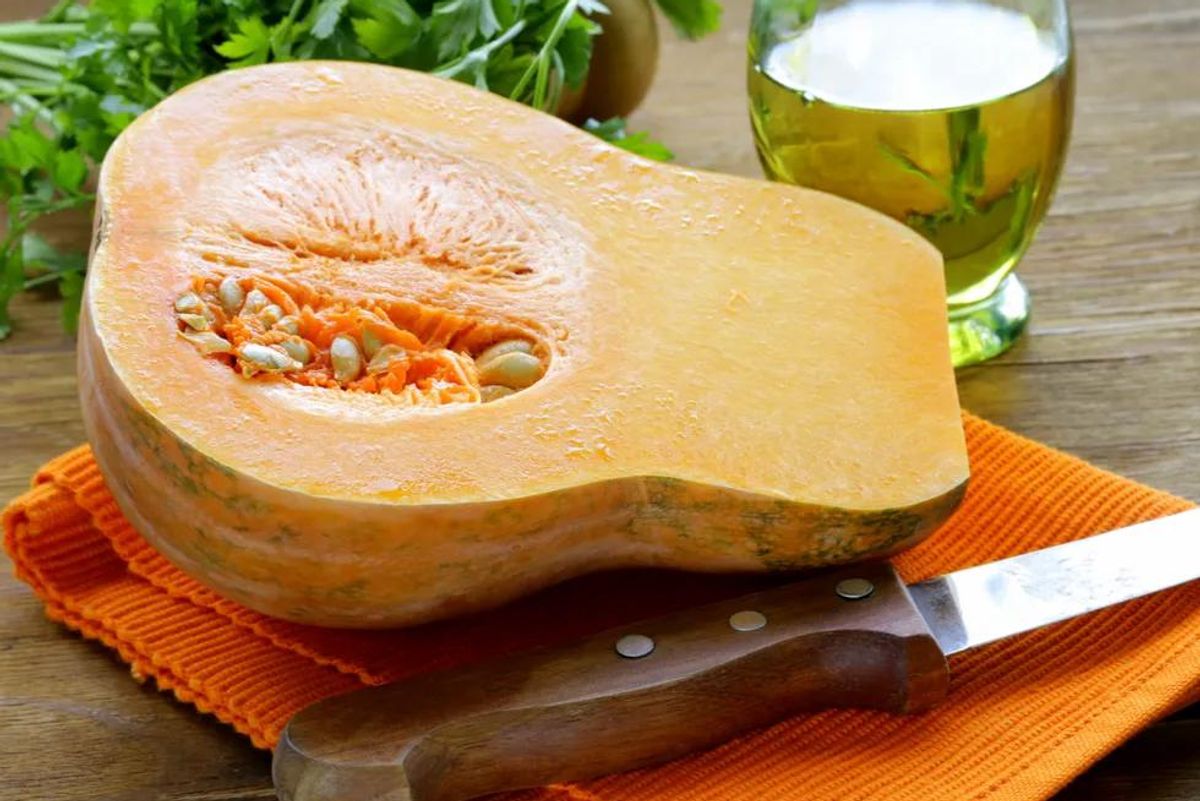Fall has officially arrived and, with it, a shift in meal planning for many of us. When the temperatures start dropping, dinner ideas often shift to roasted meats and vegetables, stews and other hearty foods.
If you want to make sure you still eat enough healthy fresh fruits and vegetables when preparing heartier fall and winter meals, take a tip from The Cooking Fairy, Joanna Walls, who is a personal chef in Greenwich, Conn.
Walls recommends these five high-fiber fruits and vegetables and shares some quick and easy ways to add them to your fall menus.
Zucchini. Your garden—or your neighbor's or the local market—may still be overflowing with this versatile vegetable. It's loaded with vitamin C and is a good source of vitamins K and B6, along with some protein, fiber and minerals. Add it to your scrambled eggs in the morning for pop of color or toss some in your quesadillas or enchiladas for dinner. Try zucchini sliced and eaten raw with low-fat dip or sauté it with garlic and herbs before pureeing it into a creative pasta sauce. You can even bake a chocolate cake with zucchini—it adds moisture and is a great way to sneak vegetables into kids' food.
Tomatoes. Many of us think of tomatoes as a summer vegetable (or fruit, if you know your botany), but in parts of the country, tomato vines produce well into the fall. Caprese salads are good year-round, but if you're looking for new ways to use tomatoes, add some to soups and stews to create a rich, deep flavor. A serving of fresh tomatoes contains almost your entire daily requirement for vitamin C, along with a good dose of vitamin A and some vitamins B6, E and K. They're also rich in potassium, magnesium and fiber. And don't forget that tomatoes are loaded with lycopene, an antioxidant compound that gives color to certain red, yellow and orange fruits and vegetables. Lycopene is believed to have health benefits that may include lowering inflammation in your body and reducing your risk of heart disease, macular degenerative disease and possibly even cancer, though more study is needed, according to the American Cancer Society.
Swiss chard. Swiss chard is sometimes prepared like spinach—simply sautéed with a little garlic, herbs, or other seasonings. A more creative way to enjoy Swiss chard is by using the leaves for roll-ups and filling them with sandwich fillings, such as hummus and veggies, or even chicken salad, Walls suggests. Make it more of a meal by stuffing with rice and any fall vegetables. Add a little low-fat ricotta, feta or other cheese and bake in the oven. Swiss chard is loaded with vitamins A and C, along with some vitamins E, K and B6. Make a crunchy snack by doing a variation of kale chips. You can also try experimenting with other greens, which are plentiful this time of year, like spinach, collards, mustard greens or beet greens.
Butternut squash. Winter squash, like butternut, acorn, delicate, hubbard, spaghetti and turban varieties, can be a bit daunting to the average home cook because of their tough outer shells. The easiest way to prepare most winter squash is to cut off the stem (if any), halve the squash lengthwise with a sharp knife, scoop out any seeds or fibrous material from the center, then place cut side down on a lightly oiled baking sheet and roast for about 15 to 45 minutes (depending on the size and type of squash) in a 375-degree oven. Once you get the hang of preparing them, you may be hooked on their flavors and versatility. They taste so good you may forget they're good for you—very high in vitamins A and C, with a healthy amount of calcium, iron and other minerals. Walls recommends using butternut squash in soups or adding to fall salads, risottos or pastas. She suggests pairing butternut squash with walnuts, pears, apples, goat cheese or blue cheese.
Apples. What would fall be without fresh apples? If you live in an area where they grow, you may be able to pick your own. But, even if you buy them, remember that apples are packed with fiber and some vitamin C. Studies show there may be some truth to the old adage, "An apple a day keeps the doctor away." Walls likes to bake them, put them in salads and makes sauces from them. You can make a quick homemade applesauce or sauté them with leeks. Pair with pork or chicken, and you're on your way to a quick and healthy cool weather dinner.
Get more HealthyWomen recipes to try this season.







